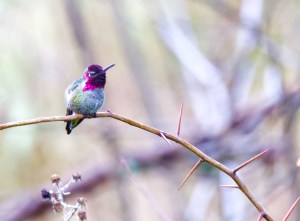Birdwatching Flickers are the Ringo Starr of birds
Published 12:54 pm Tuesday, June 2, 2015

- Flickers love suet. Hanging some from a nearby branch is an effective way of getting to observe these interesting birds.
Woodpeckers drum on trees, telephone poles and even on houses where there is wood — and especially if there is metal flue or some other piece of metal on the house. They drum loudly to attract potential mates as well as to establish their territory. The northern flicker is the loudest and maybe the best drummer of our woodpecker and sapsucker species. According to the Cornell Lab of Ornithology they can often be heard a mile away.
Trending
The northern flicker is one of our larger woodpeckers. It is a little larger than a robin. In the West it is known as the “red-shafted” flicker, because it has orange-red on the underside of the wings and tail. It is has a brown crown and a gray or brown face. The adult male has a red malar stripe or “moustache.” The back is brown and barred. The beige belly is heavily spotted and sports a black breast band.
In the east the northern flicker is known as the “yellow-shafted” because of its yellow underwings and tail. It is has a gray crown and nape and a brown face. Both adults show a red crescent on their nape. The adult male also sports a black malar stripe or “moustache” and a black breast band on its black spotted belly.
These two races often interbreed where their populations overlap. These hybrids will show a combination of characteristics from the two races. All flickers have a white rump that is highly visible in flight.
Trending
Northern flickers mainly forage on the ground. They use their very long tongue (2 inches) to snare their favorite food: ants. They will also come to feeders to eat seeds, but are especially fond of suet on the cold days of winter.
Flickers prefer to nest in tree cavities that they excavate themselves. The nest is lined with wood chips and generally contains 6-8 pure white, glossy eggs. The flicker’s eggs are the second largest of the North American woodpecker species. Only the eggs of the pileated woodpecker are larger.
The northern flicker is common in Pacific County and in the Willapa National Wildlife Refuge. It can be seen in wooded areas and treed areas with some openness, like golf courses, parks, yards and woodland edges.
Nesting birds are seen almost yearly in Beard’s Hollow and the Tarlatt unit of WNWR.
If you hear incessant, loud tapping in the spring on your house, on a tree or you think someone is knocking on your door, but no one is there, it just might be the Ringo Starr of the bird world, the northern flicker.






